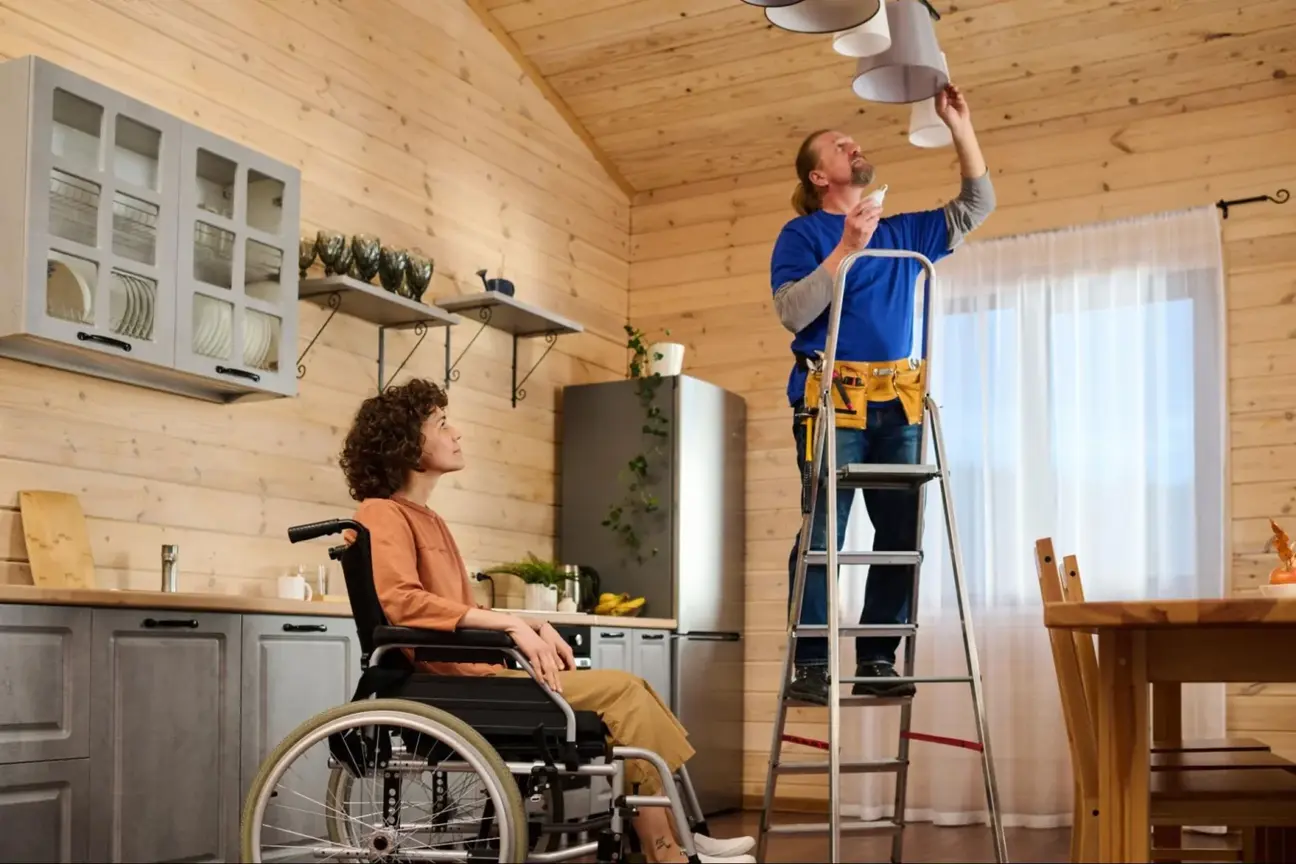
If you or someone you know is living with a disability, you may be wondering how to make your home more accessible. Home adaptations can be vital for those with disabilities, allowing them to live more independently and comfortably. However, knowing where to start or what modifications are necessary can be challenging. That’s where a professional handyman can help.
Handymen are skilled professionals who can assist with various home adaptations for disabilities. They can assess your needs and recommend modifications that will make your home more accessible and safer. From installing grab bars in the bathroom to widening doorways and ramps, a handyman can help you create a living space that meets your unique needs.
If you’re considering home adaptations for disabilities, it’s essential to understand the process and what to expect. This article will provide an overview of how handymen can help with home adaptations for disabilities, including common modifications, financial considerations, and legal compliance issues. With this information, you’ll be better equipped to create a living space that is safe, comfortable, and accessible.

When adapting homes for disabilities, it’s important to understand the different types of disabilities and their corresponding needs. By making the necessary modifications, you can help create a safe and comfortable living space that promotes independence.
Various types of disabilities require different home adaptations. Here are some common disabilities and their corresponding needs:
Home adaptations for disabilities can provide numerous benefits, including:
Overall, understanding the specific needs of individuals with disabilities and the corresponding home adaptations can help you create a safe and comfortable living space that promotes independence and enhances quality of life.
When it comes to home adaptations for disabilities, it is important to assess the specific needs of the individual to ensure that the right adaptations are made. This assessment can be done by a professional or by the individual, with the guidance of a professional.
Handymen who specialize in home adaptations for disabilities can assess your home and provide recommendations for adaptations that will make your living space more accessible and safer. They can evaluate your home’s layout, entryways, and other features to determine what adaptations are necessary. This can include adding wheelchair ramps, grab bars, and stair lifts, among other things.

Handymen can help individuals with disabilities by making their homes more accessible and safe. Here are some common home adaptations that can make a big difference:
Accessibility modifications can make it easier for individuals with disabilities to navigate their homes. Some common accessibility modifications include:
Safety features and equipment can help reduce the risk of accidents and injuries in the home. Some common safety features and equipment include:
Adaptive technology integration can help individuals with disabilities live more independently. Some common adaptive technology integration options include:
By offering these common home adaptations, you can help individuals with disabilities live more independently and safely in their homes.
If you or a loved one is living with a disability, you may need to make home adaptations to improve accessibility and safety. A handyman can be an invaluable resource in this process. Here are some ways a handyman can help with home adaptations for disabilities.
A handyman can install and customize a variety of adaptations to make your home more accessible. For example, they can install grab bars, handrails, and ramps to make it easier to navigate the home. They can also customize cabinets and shelves to make them more accessible for those in wheelchairs or with limited mobility.
Once adaptations are installed, it’s important to maintain and repair them to ensure they continue to function properly and remain safe. A handyman can provide regular maintenance and repairs for adaptations such as grab bars, handrails, and ramps. They can also make adjustments to ensure that these adaptations continue to meet your needs as your mobility changes over time.
Overall, a handyman can play a crucial role in helping you or a loved one live more comfortably and independently with a disability. With their expertise in installation, customization, maintenance, and repair, they can help you create a safe and accessible home environment.
Home adaptations for individuals with disabilities can make a significant difference in the quality of life for individuals with disabilities. Handymen can help make these adaptations by installing entryway ramps, stair lifts, raised-height toilets, non-slip flooring, and bathroom grab bars.
It is important to keep in mind that each individual has unique needs, so it is important to work closely with your handyman to determine the best adaptations for your specific situation.
Overall, by providing home adaptations for disabilities, you can make a significant impact on the lives of individuals with disabilities. For your home improvement and accessibility needs, contact Kaminskiy Care and Repair Today!
There are several types of home modifications available for individuals with disabilities. Common modifications include installing an entryway ramp, a stair lift, raised-height toilets, non-slip flooring, bathroom grab bars, and widened doorways. These modifications can help make your home easier to navigate and less risky for individuals with disabilities. Handyman Solutions offers a variety of services and products to make your home more accessible. They can install grab bars, handrails, and ramps to make it easier to get around your home.